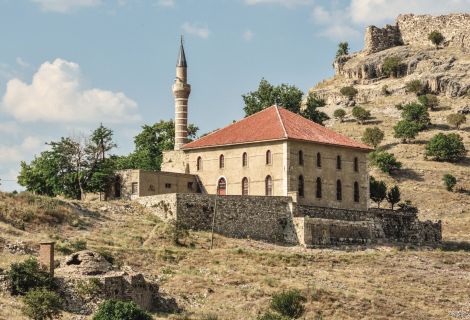ALAEDDIN MOSQUE
Turkiye 13th Century
1232
It is located on a hill outside the historic walls of Uluborlu Citadel. It is recorded as Cami-i Uluborlu or Alaeddin Camii in some sources but locally it is known as the Great Mosque as well.
The present-day monument standing on a north-south rectangular area is an Ottoman structure with nineteenth-century characteristics.
One of the inscriptions ascribing the mosque to the Seljuk period is located on the minaret’s socle. The five-line Arabic inscription in thuluth script is placed within a pointed-arched niche over the door to the minaret and states that the masjid al-jam’i was built in 1281/82 by Badr al-Din Omar, son of al-Hajj in the reign of Sultan Giyath al-Din Mas’ud.
Another five-line Arabic inscription, mentioned in some sources to be placed on the north gate but partially destroyed in the fire of 1909 and removed to the Public Training Centre, refers to a masjid built in April/May 1232 from the personal property of Malika Ismet, purity of Islam and Muslims, clarity of the world and religion, the knowledgeable and righteous daughter of martyred Malik Tughrulshah, son of Sultan Qilich Arslan II, during the reign of Ala al-Din Kay Qubadh I. Both inscriptions were carved on the occasion of a construction. In case the inscription dated 1232 is agreed to belong to the mosque, then the inscription on the minaret’s socle should have been brought from another monument, which probably fell down.
No traces are attested from the Alaeddin Madrasa, which originally adjoined the mosque.


